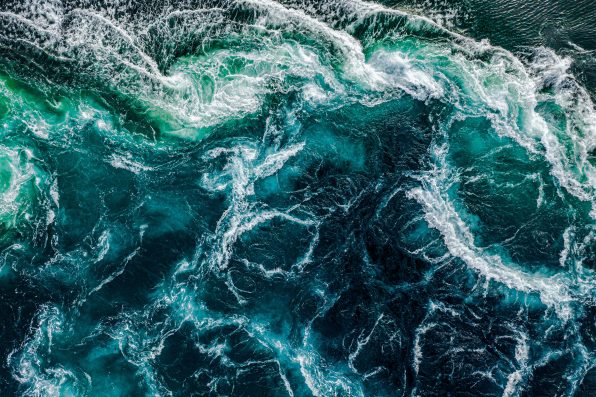Deep-Sea Ocean Currents Fluctuate More Than Previously Thought, And They Strangely Reverse

Ocean currents are important because they transport water and nutrients in addition to controlling the Earth’s climate.
While currents on the ocean’s surface are fairly easy to measure and monitor, those in the deep sea aren’t so simple to track.
But scientists have recently gathered a plethora of information on deep ocean currents, providing the largest dataset ever on the speed and direction of currents near the seafloor in the region off the coast of Mozambique. They are nothing like what the scientists expected to see.
In the area that was studied, it was previously believed that seafloor currents were steady and flowed from south to north.
However, the results of the study showed that deep-sea currents actually fluctuated more than experts thought.
“These conveyor belts of currents that operate the whole way around our planet are going to be far more complicated than the textbook models suggest,” Mike Clare, the senior author of the study and a sedimentologist from the National Oceanography Center, said. “They really do warrant very careful investigation.”
Sensors secured to the seafloor called acoustic Doppler current profilers (ADCPs), are used to measure deep-sea currents.
But managing these tools is a difficult and expensive task, so they have only been used for short periods of time during studies.
Luckily, an Italian oil and gas company named Eni positioned 34 ADCPs on the seafloor just off the coast of the Mozambique Channel for industrial purposes.

Andrei Armiagov – stock.adobe.com – illustrative purposes only
They covered an area of roughly 965 square miles. The instruments measured the speed and direction of currents every 10 minutes for four years. The company shared the data with the researchers.
Lewis Bailey, a geoscientist from the University of Calgary, analyzed the data from the ADCPs and noticed that the results looked very different from the trend of steady northward currents that was expected.
But after examining the data further, the researchers found that the seafloor currents would often speed up, slow down, and even reverse direction.
They wanted to get down to the bottom of what was causing these patterns of variation. It turned out that the currents changed throughout the seasons and tidal cycles.
The ADCPs and the patterns they picked up from the seabed showed that currents on open seafloor slopes generally flowed northward. But within submarine canyons, which usually face east-west, the currents often reverse direction.
The researchers suspected that the seafloor topography and the tides are mostly in command of the character of the currents.
Scientists depend on studies of ocean currents to determine how sediments and pollutants, such as microplastics, are transported and how they might affect deep-sea ecosystems. The studies also help with reconstructing ancient ocean conditions.
The details of the recent findings were published in Nature Geoscience.
Sign up for Chip Chick’s newsletter and get stories like this delivered to your inbox.
More About:News





